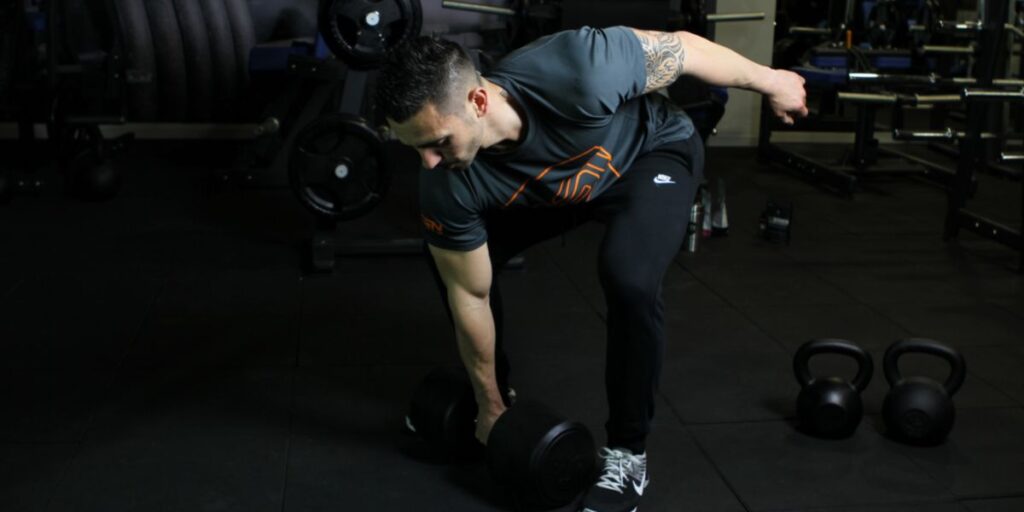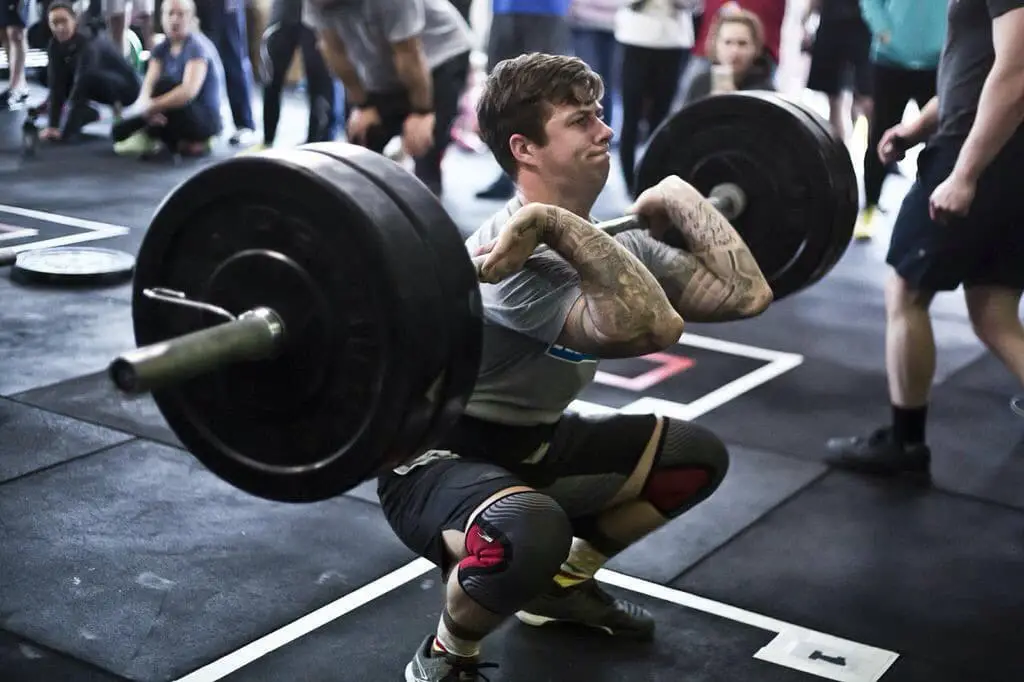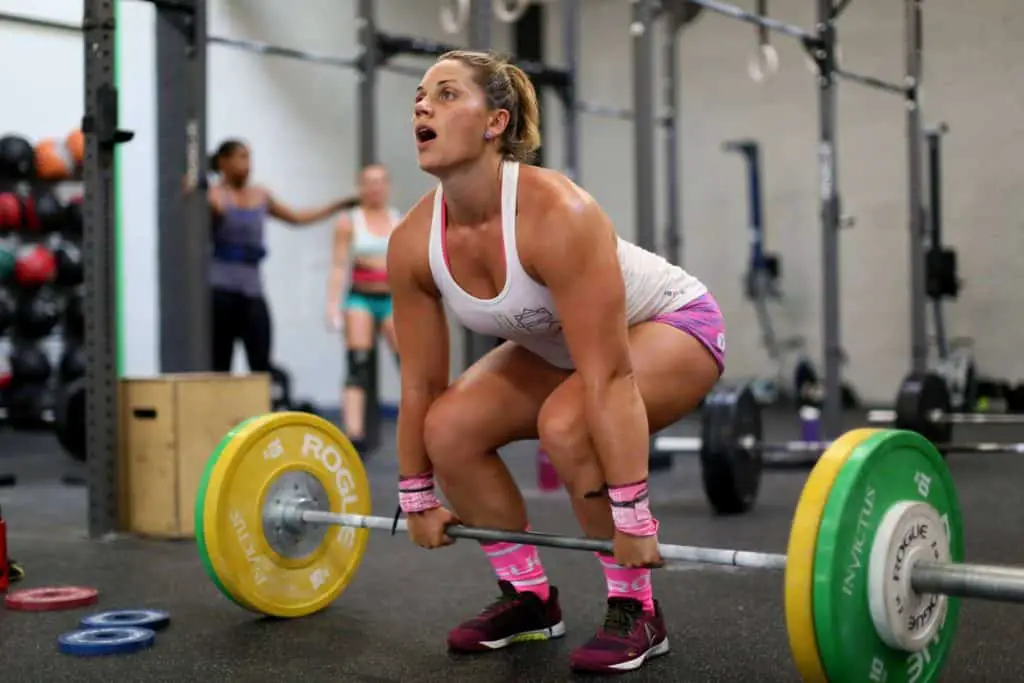Introduction
What Are Clusters In Crossfit: Clusters in CrossFit represent a dynamic and powerful approach to improving athletic performance. These clusters, often referred to as “cluster sets” or “cluster training,” are a strategic method for organizing repetitions and rest intervals during a workout. In essence, clusters are a tool that allows CrossFit athletes to maximize strength, power, and muscular endurance while minimizing fatigue and maintaining proper form.
The concept of clusters involves breaking down a set of repetitions, typically using compound movements like squats, deadlifts, or Olympic lifts, into smaller subsets with brief rest periods in between. For instance, instead of performing 10 consecutive repetitions of a movement, an athlete might execute two or three repetitions, rest briefly, and then repeat until the desired total is achieved. The primary goal of this approach is to maintain optimal power output and technique throughout the set.
Clusters offer several advantages in the CrossFit context. Firstly, they allow athletes to lift heavier weights compared to traditional straight sets, as the brief rest intervals help combat fatigue and maintain muscle recruitment. Secondly, they help enhance muscular endurance by exposing muscles to repeated bouts of intense effort with minimal recovery time. Furthermore, clusters are an effective tool for skill development, as they enable athletes to focus on technique during each subset of repetitions.

What does cluster mean in gym?
What Are Cluster Sets? A cluster set is a set that’s broken down into several mini-sets, with short intra-set rest periods between them. The weight is re-racked or put down during these short rest periods, allowing the muscles a brief respite before the next mini-set.
Increased Strength: Cluster training enables you to lift heavier weights than you might with traditional sets, ultimately leading to increased strength gains.
Improved Power Output: For exercises that require explosive power, such as Olympic lifts or plyometric movements, cluster training allows you to maintain speed and power throughout the workout.
Muscle Hypertrophy: Clusters can be adapted for hypertrophy goals by increasing the number of repetitions in each cluster. This promotes muscle growth while still offering the benefits of short rest intervals.
Enhanced Technique: With shorter, more focused efforts, cluster training helps you maintain proper form and technique, reducing the risk of injury.
Time Efficiency: Cluster training can be time-efficient since it allows for shorter rest periods, making it suitable for individuals with busy schedules.
What is an example of cluster training?
For example, a cluster set workout might involve lifting a set of 9 reps total but splitting it into three mini-sets of 3 reps with 10 seconds of rest in between.
Objective: Strength and Hypertrophy (Muscle Growth)
Cluster training for the bench press involves breaking down a set of repetitions into clusters with brief rest intervals. In this example, we’ll use a cluster size of 3 repetitions with a 20-second inter-cluster rest interval. This configuration is just one of many possibilities, and you can adjust the parameters to suit your fitness level and goals.
Step 1: Warm-Up
Before beginning the cluster training, it’s essential to warm up properly to prevent injury and prepare your muscles for the upcoming workout. Spend about 5-10 minutes on a cardiovascular warm-up (e.g., jogging, cycling) followed by dynamic stretches and a few light sets of bench press with just the barbell to activate the target muscles.
Step 2: Set Up Your Equipment
Ensure that you have a bench press station set up with the appropriate weight on the barbell. The weight should be challenging but manageable for a set of 3 repetitions.
What is the difference between cluster and squat clean?
Cluster workouts combine an Olympic lifting movement, the squat clean, which is a compound exercise, with a thruster. Compound movements are multi-jointed, which require more than one muscle group to be used throughout an exercise.
Technique: A cluster clean is a compound exercise that combines two movements: a power clean followed by a front squat. It begins with lifting the barbell from the ground to the shoulders using a power clean technique, which involves explosively pulling the bar upward and catching it at shoulder height. Afterward, without releasing the bar, the lifter proceeds to perform a front squat, bending their knees and lowering their hips while maintaining a firm grip on the bar.
Purpose: Cluster cleans are often used in CrossFit and functional fitness workouts to build strength, power, and overall conditioning. They combine the explosiveness of the power clean with the lower body strength and stability of the front squat.
Benefits: Cluster cleans are excellent for developing full-body strength and power, as they require a strong pull from the ground and a deep squat to complete the movement. They also improve coordination and balance.
Equipment: Typically performed with a barbell, bumper plates, and a lifting platform.
Why is it called a cluster?
Cluster comes to us from the Old English word clyster, meaning bunch. Nowadays, you can use cluster as either a noun or a verb. When we were kids, we would stand in a cluster (noun) on the street corner, eagerly awaiting the appearance of the Good Humor truck every afternoon.
Cluster Sets and Repetitions
In the realm of fitness and strength training, the term “cluster” typically refers to a training technique that involves breaking down a set of repetitions into smaller, manageable subsets with short rest intervals in between. For example, if you’re performing a cluster set of bench presses with a cluster size of 3 repetitions, you would lift the weight for three reps, rest briefly, and then repeat this cluster for a predetermined number of sets.
Origin of the Term
The term “cluster” in this context likely derives from its meaning in the English language, where a cluster refers to a group or collection of similar items or elements that are closely packed together. In cluster training, repetitions are grouped together, much like elements in a cluster, with short rest periods separating them.
Purpose of Clustering
The primary purpose of clustering repetitions in strength training is to allow individuals to perform more repetitions at a higher intensity, thereby promoting muscle and strength gains. By breaking a set into clusters with short rests, it becomes possible to lift heavier weights or maintain explosiveness throughout each repetition.
What is an example of cluster example?
For example, if you were to conduct a study on the consumption of soda in a particular city, you could use area sampling to divide the city into different areas, called clusters, and then select certain clusters to be a part of the sample group.
Increased Strength: Cluster training allows you to lift heavier weights than you might with traditional sets, promoting significant strength gains over time.
Muscle Hypertrophy: By focusing on a moderate cluster size, you can achieve a balance between heavy weights and muscle-building volume, leading to increased muscle size.
Efficient Use of Time: Cluster training allows you to complete an effective workout in less time compared to traditional continuous sets, making it suitable for individuals with busy schedules.
Improved Technique: Short rest intervals within clusters help maintain proper bench press form and technique throughout the workout.
Variability: You can customize cluster training to suit your goals by adjusting cluster size, inter-cluster rest, and the number of sets.
What are the benefits of cluster training?
By breaking down a set into clusters with brief rest periods, you can accumulate more repetitions or use heavier weights than you would in a continuous set. This helps improve overall work capacity, allowing for greater training volume and intensity. In other words: more total work completed and therefore more muscle.
Increased Strength Gains
Cluster training allows you to lift heavier weights compared to traditional continuous sets. By performing a few repetitions at a time with short rest intervals, you can maintain a high level of intensity throughout the workout. This increased intensity translates to greater strength gains over time.
Enhanced Muscle Hypertrophy
Cluster training can be tailored to focus on muscle hypertrophy (muscle growth). By increasing the number of repetitions in each cluster and using moderate weights, you can stimulate muscle development effectively. The combination of volume and intensity promotes significant muscle growth.
Improved Power and Explosiveness
For exercises requiring explosive power, such as Olympic lifts or plyometric movements, cluster training is highly beneficial. It allows you to maintain speed and power throughout the workout, which is essential for athletes and individuals looking to improve their explosive strength.
Efficient Use of Time
Cluster training is time-efficient because it reduces the overall duration of a workout. Short rest intervals mean less downtime between sets, enabling you to complete your training session more quickly while still achieving your desired training volume and intensity.
What is cluster and how it works?
A cluster is a group of inter-connected computers or hosts that work together to support applications and middleware (e.g. databases). In a cluster, each computer is referred to as a “node”. Unlike grid computers, where each node performs a different task, computer clusters assign the same task to each node.
Cluster Size: Cluster size refers to the number of repetitions performed within each cluster. It can vary based on your fitness goals and the exercise being performed. Common cluster sizes include 2, 3, or 4 repetitions per cluster.
Inter-Cluster Rest: The inter-cluster rest interval is a key component of cluster training. It’s the brief period of recovery you take between each cluster. The duration of this rest can range from 10 to 30 seconds, depending on your goals and the exercise.
Total Sets: The number of total sets performed in a cluster training session depends on your training objectives and fitness level. Cluster training can be adapted for both strength and hypertrophy (muscle growth) goals.
Why is cluster important?
Clustering is used to identify groups of similar objects in datasets with two or more variable quantities. In practice, this data may be collected from marketing, biomedical, or geospatial databases, among many other places.
Maximizes Intensity
One of the primary reasons cluster training is capacity to maximize workout intensity. By breaking a set of repetitions into smaller clusters with brief rest intervals, individuals can maintain a high level of effort and intensity throughout the workout. This heightened intensity is critical for stimulating muscle growth and increasing strength.
Enhances Strength Development
Cluster training is particularly valuable for individuals aiming to increase their strength levels. The short rest intervals between clusters allow for the use of heavier weights than what might be possible in traditional continuous sets. As a result, the neuromuscular system is challenged to a greater extent, leading to strength gains over time.
Promotes Muscle Hypertrophy
Muscle hypertrophy, or the growth of muscle tissue, is a common fitness goal. Cluster training can be adapted to focus on muscle hypertrophy by adjusting cluster size and the number of sets. The combination of increased volume and intensity during cluster sets can lead to substantial muscle growth.
Improves Power and Explosiveness
Athletes, especially those involved in sports requiring explosive power, can benefit significantly from cluster training. Exercises like Olympic lifts and plyometrics can be enhanced through cluster sets, allowing athletes to maintain power and speed throughout their workouts.

Conclusion
Clusters offer a structured approach to strength and power development, allowing athletes to lift heavier weights than they might have thought possible while maintaining proper form and technique. This not only enhances muscular strength but also helps in developing explosive power, a crucial aspect of CrossFit’s functional fitness philosophy.
Clusters are an invaluable tool for improving muscular endurance. By repeatedly exposing muscles to intense effort with short rest intervals, athletes can build greater stamina and resilience, translating into improved performance in various CrossFit exercises and competitions. The mental benefits of incorporating clusters into CrossFit workouts should not be underestimated. This training method challenges athletes to overcome physical and mental fatigue, fostering mental toughness and determination.
Athletes must learn to push through discomfort, which can translate into improved performance not only in the gym but also in various aspects of life. As with any training method, proper programming and implementation are essential when using clusters in CrossFit. Athletes should work closely with coaches or trainers to ensure that clusters are integrated into their routines effectively and safely. It’s also crucial to tailor cluster sets to individual fitness levels and goals, as what works for one athlete may not be suitable for another.

